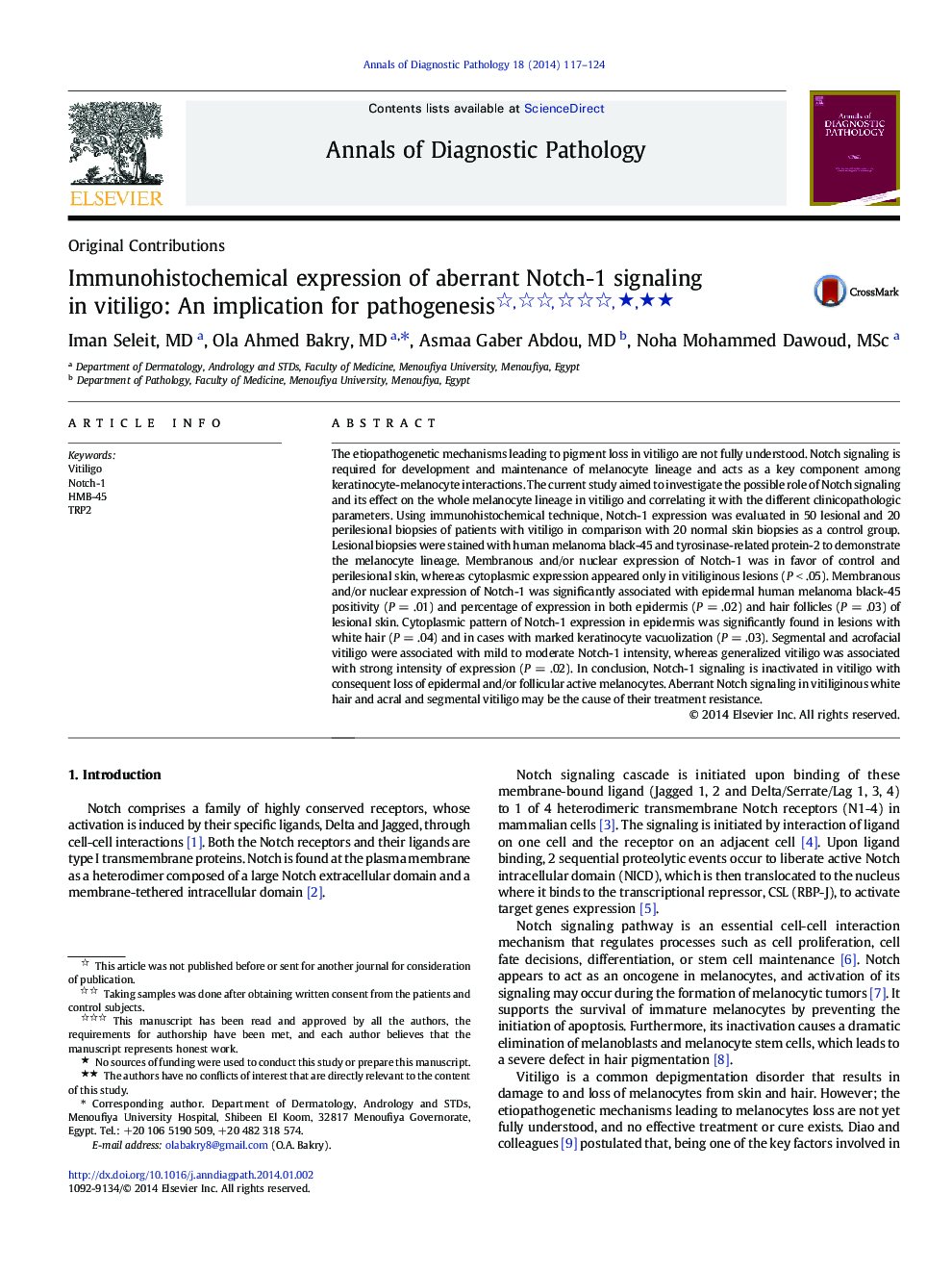| Article ID | Journal | Published Year | Pages | File Type |
|---|---|---|---|---|
| 4129971 | Annals of Diagnostic Pathology | 2014 | 8 Pages |
The etiopathogenetic mechanisms leading to pigment loss in vitiligo are not fully understood. Notch signaling is required for development and maintenance of melanocyte lineage and acts as a key component among keratinocyte-melanocyte interactions. The current study aimed to investigate the possible role of Notch signaling and its effect on the whole melanocyte lineage in vitiligo and correlating it with the different clinicopathologic parameters. Using immunohistochemical technique, Notch-1 expression was evaluated in 50 lesional and 20 perilesional biopsies of patients with vitiligo in comparison with 20 normal skin biopsies as a control group. Lesional biopsies were stained with human melanoma black-45 and tyrosinase-related protein-2 to demonstrate the melanocyte lineage. Membranous and/or nuclear expression of Notch-1 was in favor of control and perilesional skin, whereas cytoplasmic expression appeared only in vitiliginous lesions (P < .05). Membranous and/or nuclear expression of Notch-1 was significantly associated with epidermal human melanoma black-45 positivity (P = .01) and percentage of expression in both epidermis (P = .02) and hair follicles (P = .03) of lesional skin. Cytoplasmic pattern of Notch-1 expression in epidermis was significantly found in lesions with white hair (P = .04) and in cases with marked keratinocyte vacuolization (P = .03). Segmental and acrofacial vitiligo were associated with mild to moderate Notch-1 intensity, whereas generalized vitiligo was associated with strong intensity of expression (P = .02). In conclusion, Notch-1 signaling is inactivated in vitiligo with consequent loss of epidermal and/or follicular active melanocytes. Aberrant Notch signaling in vitiliginous white hair and acral and segmental vitiligo may be the cause of their treatment resistance.
